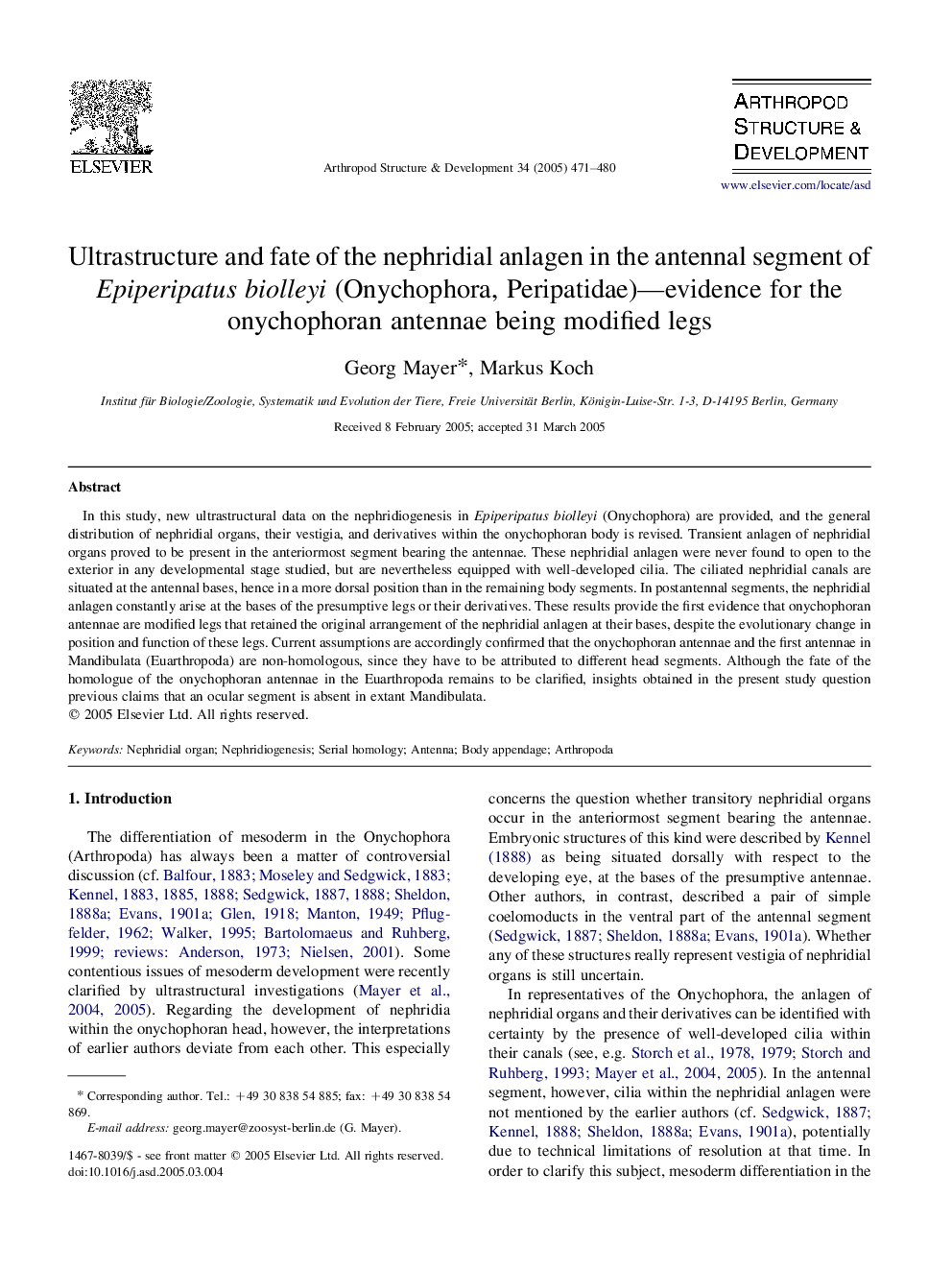| Article ID | Journal | Published Year | Pages | File Type |
|---|---|---|---|---|
| 9104153 | Arthropod Structure & Development | 2005 | 10 Pages |
Abstract
In this study, new ultrastructural data on the nephridiogenesis in Epiperipatus biolleyi (Onychophora) are provided, and the general distribution of nephridial organs, their vestigia, and derivatives within the onychophoran body is revised. Transient anlagen of nephridial organs proved to be present in the anteriormost segment bearing the antennae. These nephridial anlagen were never found to open to the exterior in any developmental stage studied, but are nevertheless equipped with well-developed cilia. The ciliated nephridial canals are situated at the antennal bases, hence in a more dorsal position than in the remaining body segments. In postantennal segments, the nephridial anlagen constantly arise at the bases of the presumptive legs or their derivatives. These results provide the first evidence that onychophoran antennae are modified legs that retained the original arrangement of the nephridial anlagen at their bases, despite the evolutionary change in position and function of these legs. Current assumptions are accordingly confirmed that the onychophoran antennae and the first antennae in Mandibulata (Euarthropoda) are non-homologous, since they have to be attributed to different head segments. Although the fate of the homologue of the onychophoran antennae in the Euarthropoda remains to be clarified, insights obtained in the present study question previous claims that an ocular segment is absent in extant Mandibulata.
Keywords
Related Topics
Life Sciences
Agricultural and Biological Sciences
Insect Science
Authors
Georg Mayer, Markus Koch,
